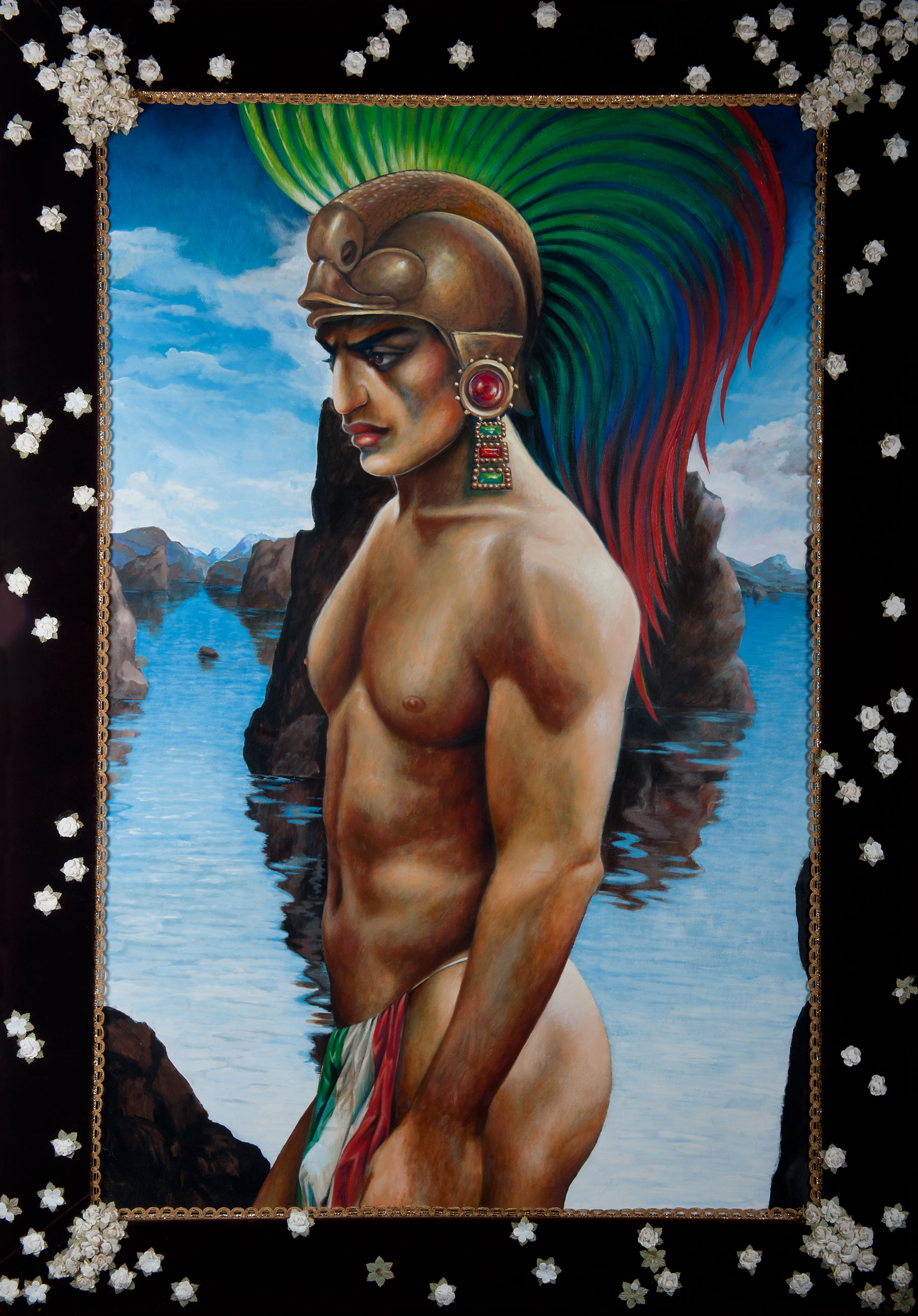Cuauhtémoc
Javier de la Garza
In his paintings on Mexico’s indigenous mythology from the mid-1980s, Javier de la Garza subverts the racial and sexual codes of patriotic lore in a way that challenges the national archetypes produced by the Mexican state. This depiction of Cuauhtémoc, the last Aztec ruler, emphasizes how the mythification of the national hero (as depicted by artists such as Jesús Contreras, Saturnino Herrán, and Jorge Enciso) created an idealization of the pre-Hispanic past by exhibiting largely androgynous, sexu-alized indigenous bodies.

In critiquing the subliminal eroticism of patriotic Mexican images, De la Garza incorporates kitsch ele-ments from the commercial Aztec iconography that appeared in Jesús Helguera’s almanacs of the 1940s, school monographs, and mythical scenes exalted by the Golden Age of Mexican Cinema. This scene’s camp aesthetic is bolstered by the velvet frame and lace and plastic flowers. At the back of the canvas, the artist has inscribed a quote from the song “Amor gitano” [Gypsy Love] by José Feliciano—“Toma este puñal, hábreme [sic] las venas, déjame sangrar” [Take this dagger, open my veins, let me bleed]—as a melodramatic scene of spite.
Cuauhtémoc is portrayed ironically, and on an almost human scale, as a trim, muscular, effeminate hero with darkly outlined lips and eyebrows and clad in a small loincloth dyed the colors of the Mexican flag. This attire is, in itself, blasphemous: it both covers and accentuates the hero’s genitals, depicting them on the verge of erection, an intimation of a largely narcissistic drive.
Explore with Second Canvas
JAVIER DE LA GARZA (1954)
Cuauhtémoc (Captura de Cuauhtémoc. “Toma tu puñal, hábreme [sic.] las venas, déjame desangrar, etc. etc.”), 1986
The Capture of Cuauhtémoc: “Take your dagger, open my veins, let me bleed, etc. etc.”
Acrylic and oil on canvas, velvet, and paper flowers
Acquisition with funds from the Presupuesto de Egresos de la Federación, 2014


